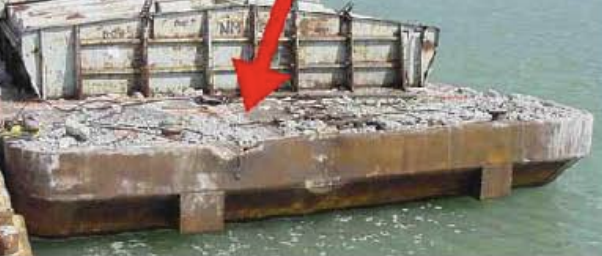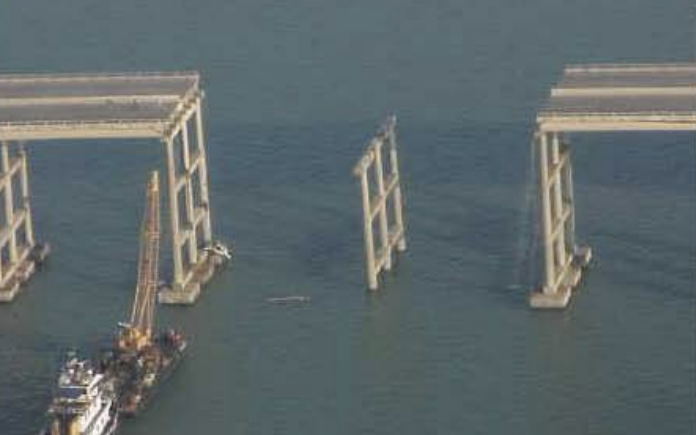Coming on the heels of the deadly Francis Scott Key Bridge collapse in Baltimore was the allision of the 321' barge MMLP 321 last week with the Sea Wolf Parkway Bridge in Galveston, Texas, closing off vessel traffic for 6.5 miles and temporarily disrupting road traffic and power to Pelican Island and the Texas A&M Galveston campus, according to the Coast Guard and local authorities.
The MMLP 321, owned by Martin Petroleum had a cargo of 30,000 gals. of vacuum gas oil, some of which leaked into the Intracoastal Waterway, according to the Coast Guard and the Galveston County Office of Emergency Management.
Thankfully, there have been no reports of death or injury from this collision.
It certainly could have been worse.
For example, on Sept. 15, 2001, Brown Water Marine’s 52'x20' towboat Brownwater V, while pushing four barges owned by American Commercial Lines, struck the Queen Isabella Causeway bridge near Brownsville, Texas, causing two 80' sections of the bridge to collapse.
Nine vehicles that were crossing the 2.4-mile causeway at the time of the accident plunged into Laguna Madre Bay. (The bridge connects Port Isabel and South Padre Island.) In all, eight people died and 15 were injured.
Just eight months later in Webbers Falls, Okla., Joe Dedmon lost consciousness in the wheelhouse of the 104'x30' towboat Robert Y. Love. While unconscious, Dedmon’s towboat shoved one of the two 297'x54' asphalt barges it was pushing into the Interstate 40 bridge over the Arkansas River, collapsing a section of the span. Ten cars drove off the bridge and into the river, killing 14 people. Magnolia Marine Transport Inc. owned the towboat, while the barges belonged to Magnolia’s parent company, Ergon Inc.
Following the Texas accident, the captain of the Brownwater V, David Fowler, told the U.S. Coast Guard investigators that he had hit some kind of bump as he approached the bridge and tried to steer back into the channel, but the head kept coming to port making it impossible to stop the tow.
“The apparent cause of the casualty was Captain David D. Fowler’s failure to exercise reasonable care according to the standards of the ordinary practice of good seamanship,” an April 2005 report from the USCG said.
In the Oklahoma incident, Dedmon was rushed to a hospital after the accident and later operated on for a heart condition that required the insertion of a defibrillator, according to Magnolia Marine’s lead council at the time, Joel Henderson.
Dedmon was alone in the wheelhouse of the Robert Y. Love when the accident occurred. “It was 7:30 on a Sunday morning. There was good weather, good visibility, and a two-barge tow. No lookout was necessary,” said Henderson.
However, according to the American Admiralty Bureau’s Lawyer’s Guide to the Navigation Rules of that time, all inland vessels should have a lookout posted.
In September 2004, the National Transportation Safety Board (NTSB) said that “the probable cause of the Robert Y. Love’s allision with the Interstate 40 bridge and its subsequent collapse was the captain’s loss of consciousness, possibly as a result of an unforeseeable abnormal heart rhythm.
Two deadly bridge collisions in less than a year shook the U.S. inland industry, reinforcing efforts already underway to increase inland safety.





